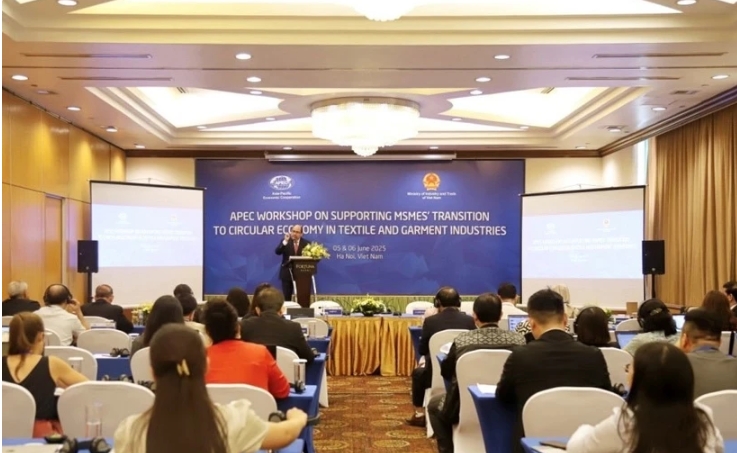Vietnam promotes circular economy transition in textile sector
A two-day APEC workshop has been held in Hanoi, focusing on supporting small and medium-sized enterprises (SMEs) in the textile and garment industry to transition towards a circular economy.

Jointly organised by Vietnam’s Ministry of Industry and Trade and the Asia-Pacific Economic Cooperation (APEC) Secretariat on June 5-6, the workshop brought together government officials, UN representatives, international associations, researchers, and textile enterprises from ASEAN countries, China, and Peru.
Pham Quynh Mai, Deputy Director of the ministry's Multilateral Trade Policy Department, said the APEC workshop was a practical initiative under the APEC framework aimed at providing solutions to help micro, small and medium-sized enterprises (MSMEs) adopt circular business models.
She emphasised the urgent need to transition to a circular economy, as the textile industry faces mounting pressure to meet standards for sustainability, carbon reduction, and supply chain transparency.
Despite their size, MSMEs play a vital role in the sector, particularly in developing economies where they dominate employment and exports, Mai said.
The workshop shared experience on how MSMEs in the textile and garment sector have tackled challenges in adopting circular business models to drive sustainable growth and transformation.
Delegates also highlighted the need for coordinated efforts from governments, international organisations, the private sector, and businesses themselves.
Carlos Obando from the APEC Secretariat stressed that circular economy models offer opportunities to reduce waste and enhance value through technological innovation.
Truong Van Cam, Vice President and General Secretary of the Vietnam Textile and Apparel Association (VITAS), noted the industry’s strengths, including stable macroeconomic conditions, skilled labour, and advantages from new-generation FTAs. However, he acknowledged growing challenges such as pressure to shift from fast fashion to sustainable fashion and meet international climate commitments.
To address these, VITAS proposed several circular economy measures, including waterless dyeing technology, replacing fossil fuel boilers with electric ones, rooftop solar systems, waste and fabric recycling, and workforce reskilling.
According to the International Trade Centre, MSMEs account for over 90% of global textile companies and are active across the entire value chain—from weaving and dyeing to garment assembly and upcycling.
In Vietnam, the government has approved a textile and footwear development strategy to 2035, targeting annual export growth of 7.5–8% from 2021 to 2025, with turnover expected to reach US$50–US$52 billion by 2025 and US$68–US$70 billion by 2030. Localisation rates are set to increase to up to 60% by 2030.



